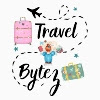 |
| Image from Learning Korean - First Step |
It is that time again where it is the end of a class and on towards the next level. Seriously I am surprised that I have lasted this long – almost 3 years learning Korean! The class is visibility getting smaller. The last time two of the most ‘energetic’ classmates took a break. *sob sob*
So the class is down to 6 people (still). With one classmate going to give birth after this cycle is done, another busy with work and the rest of us getting busier, I don’t know whether we will be able to continue to the next cycle, let alone to the end (since we are getting lazier busier and there is a minimum of 6 students in order to continue the class). But trudge on we will while we can. ☺
Now the level I am at is AA4 and there are no exams, so there is nothing to keep me that disciplined but I am still trying to study as much as I can (though I think my understanding is just elementary, better than when I started out but still… haha). Without the cost of the textbook and workbook (since it was already purchased the last cycle), the fees came up to $324 for 10 lessons over the course of about 3 months or so, which isn’t exactly the cheapest but also isn’t that expensive.
While the focus is more about the grammar and vocabulary, I think it would be a good idea Daehan Language School had lessons that focus on speaking (putting what you have learnt into practical use) in addition to what they are currently offering. Still for what it’s worth, given the distance (convenience), lesson structure and teachers (especially when you get the right teacher, but in general I think most of their teachers are ok).
One of the classmates is going to take the TOPIK Level 2 this April, and we are all waiting for her review on how it went before attempting it ourselves. Though our teacher tells us we should be able to handle the first 2 levels of TOPIK, the rest of us would rather be more prepared and wait it out.
The Korean language is easy to pick up, as in learning to read the characters, but learning how to speak properly and listening skills are another story altogether. There are alphabets in the Korean language, just like the English language, and a phonetic system that can be used to read the words when the letters are combined. But whether you know what you are reading really depends on how much vocabulary you have memorized. Grammar is another learning curve as well because there different levels (e.g. honorific, polite and casual) of language that you would use when speaking to elders, bosses or seniors, and those younger or of the same age.
The Korean language is easy to pick up, as in learning to read the characters, but learning how to speak properly and listening skills are another story altogether. There are alphabets in the Korean language, just like the English language, and a phonetic system that can be used to read the words when the letters are combined. But whether you know what you are reading really depends on how much vocabulary you have memorized. Grammar is another learning curve as well because there different levels (e.g. honorific, polite and casual) of language that you would use when speaking to elders, bosses or seniors, and those younger or of the same age.
And let’s not get to the sentence structures with their past, present, perfect present tenses along with the different degrees of intentions and who the intended listener is. There is even a slight differentiation between writing and speaking: speaking tends to be more casual with certain grammar omitted while writing is stricter and particular grammar has to be included in the syntax in order for it to be ‘correct’.
Despite it all, learning Korean is actually pretty interesting and there is a sense of accomplishment when you realize you are able to understand something being said or know what is being written in a foreign language. Of course, having an interest plays an important role in the learning journey; an interest that spurs you on to continue learning and hopefully use what you have learnt to good use one day.

0 comments :
Post a Comment